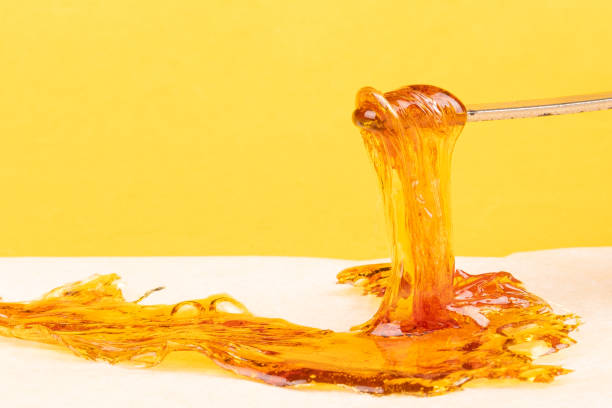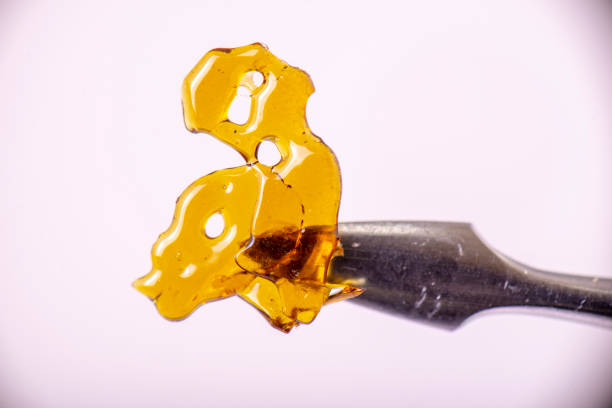A Comprehensive Guide To Shatter Concentrates: Production Techniques And Potency Levels
Shatter concentrates are quickly becoming a go-to choice for cannabis consumers. Not only do they offer an incredibly potent high, but they can also be used in a variety of ways—from smoking to vaping and more! With the rise of shatter concentrate use comes the need for comprehensive knowledge about production techniques and potency levels. To help educate potential users, this article provides a comprehensive guide to understanding these factors when it comes to shatter concentrates.
We'll start by exploring what exactly shatter is and how it's produced before delving into its effects on the body and mind. We'll then move on to discussing some popular production techniques as well as their associated potency levels so that you can make informed decisions when selecting your product. Last but not least, we'll discuss safety tips when consuming shatter concentrates in order to ensure maximum enjoyment with minimal risk. So if you want to learn more about producing or using shatter concentrates, read on!
Definition
Shatter concentrates, a potent form of cannabis extract, are gaining popularity as an alternative to traditional flower. These extracts are created through the process of extraction and refinement, resulting in a product that is more concentrated than its flower counterpart. Like gold rising from the sedimentary bottom of a riverbed, shatter can produce some serious sparkle when it comes to potency levels.
Extraction processes involve isolating compounds like cannabinoids or terpenes from raw plant material using specialized techniques such as supercritical CO2 fluid extraction (SFE). This method allows for efficient separation without introducing any additional solvents into the mix. Once separated, these compounds can then be further refined using various methods; this results in higher quality products with greater purity and potency levels compared to their non-refined counterparts.
The end result? An incredibly powerful concentrate that offers users a variety of options depending on their desired effects – all while producing less smoke and odor than regular flowers. As shatter continues to gain traction amongst consumers, people have become increasingly curious about production techniques and potency levels associated with these unique products. With that said, let's take a closer look at how shatter is made and explore different extraction processes used to create them!
Extraction Processes
The extraction process is an essential component of producing shatter concentrates. This step involves isolating compounds like cannabinoids and terpenes from the raw plant material, and can be done using a variety of methods. Supercritical CO2 fluid extraction (SFE) is one such method; it allows for efficient separation without introducing any additional solvents into the mix – resulting in higher quality products with greater purity and potency levels compared to non-refined counterparts. There are also other techniques that can be used during extraction like rosin pressing, butane hash oil (BHO), or ethanol extractions depending on what type of concentrate you want to create.
Once these compounds have been isolated through the extraction process, they must then go through further refinement before being ready for use; this includes processes such as winterization or distillation which help remove impurities while increasing both purity and potency levels. All of these steps work together to create a powerful concentrate that offers users more control over their desired effects than regular flower would – all while producing less smoke and odor!
These refined extracts are now known as 'shatter', providing consumers with potent yet discreet options when it comes to cannabis consumption. With so many different types available, let's take a closer look at some of the common types of shatter concentrates out there today!

Types of Shatter Concentrates
Shatter concentrates come in a variety of forms, each with their own unique properties and effects. From creamy budder to waxy crumble, there's an option for every cannabis enthusiast out there. Let's take a look at some of the most popular types below!
One of the most common shatter concentrates on the market is known as 'honeycomb', which has a soft texture that resembles honeycomb cells when viewed under magnification. This type of concentrate is produced through cold water extraction methods, resulting in a product that contains both terpenes and cannabinoids – making it ideal for those who want full-spectrum effects without having to compromise on potency levels.
Another form of shatter concentrate is ‘sap’ or ‘budder’, which consists mostly of THC crystals mixed with other compounds like waxes and lipids. Budder provides users with strong psychoactive effects while also delivering more subtle aromas due to its high content of terpenes; this makes it an excellent choice for those looking to experience all the nuances of different strains without overpowering flavors.
Finally, we have ‘wax’ or ‘crumble’ (also referred to as 'shatter') – another popular type of concentrate made from crystallized trichomes using heat-based extraction processes such as BHO extractions or rosin pressing. These products offer increased potency over flower buds but still retain plenty of flavor thanks to their higher concentrations of terpenes; this makes them well suited for connoisseurs seeking powerful yet flavorful experiences.
As these various concentrates are so heavily refined before being sold commercially, quality testing becomes essential not only for safety reasons but also ensuring consumers get what they pay for – be it purity, potency levels, or even cannabinoid profiles!
Quality Testing
As the demand for cannabis products continues to skyrocket, ensuring that concentrates are of the highest quality is essential. Quality testing provides assurance that what consumers purchase matches their expectations and safety standards. With so many options out there – from creamy budder to waxy crumble – it can often be overwhelming trying to determine which product will work best for you. Fortunately, with a few simple tests, you can gain insight into the potency levels, purity, and cannabinoid profiles of your chosen concentrate.
The most reliable way to test shatter concentrates is through lab analysis; this involves sending samples off for professional inspection by trained chemists who use advanced instruments to measure things like THC content and terpene profiles. While this method may seem expensive upfront, in reality it's an invaluable investment as it ensures that every batch meets industry standards and offers consistent effects with each use. On top of that, results are usually available within 48 hours or less!
In addition to laboratory testing, there are also more affordable ways of assessing the quality of your concentrate at home - such as ‘sizzle’ or 'snap' tests (which involve heating up a small sample on a spoon until it bubbles then listening for any cracking noises) or simply inspecting its appearance under magnification (for instance; crystalline structures should be clearly visible). Having said that, these methods aren't foolproof as they don't provide detailed information about specific compounds present in the product; therefore if accuracy is important to you then sending off samples for lab analysis is still recommended.
With an understanding of how different types of shatter concentrates are produced and their respective potency levels ascertained via testing procedures, we're now left with one final question: How do I actually consume them?
Methods of Consumption
Shatter concentrates can be consumed in a variety of ways, depending on the user’s preference and comfort level. The traditional method is to smoke or vaporize it using an oil rig or dabbing device – however this requires prior knowledge of how to use such tools safely and may not be ideal for those new to concentrate consumption. Another option is to mix shatters with dry herbs before rolling into joints; although this results in less intense effects, it does make them easier to share among friends.
For more discreet methods, edibles are often recommended as they provide longer-lasting effects without any smell or visible residue. To do this, all you need to do is infuse your shatter into butter or coconut oil which can then be used in baking recipes like brownies or cookies. Similarly, tinctures offer another convenient way of taking concentrates orally while still being able to manage dosage levels easily. Lastly, sublingual administration (i.e., placing drops under the tongue) allows for rapid absorption and a stronger effect than other methods - making it perfect for experienced users who want quick relief from their symptoms.
No matter which route you choose, understanding potency levels will help ensure that no one experiences unexpectedly strong reactions after consuming your product. With that in mind, we now turn our attention towards health and safety considerations when dealing with shatter concentrates....

Health and Safety Considerations
Much like any form of medication, safety is paramount when dealing with shatter concentrates. As such, the most prudent course of action is to always start off slow and increase dosage as needed - particularly for those who are new to consuming cannabis extracts.
At the same time, it’s important to remember that inhalation can be extremely harsh on the lungs – especially if treated carelessly or used in excess. Therefore, users should ensure they have ample ventilation before vaporizing their concentrate and avoid taking huge hits which could lead to dizziness or other adverse effects. Additionally, people with pre-existing respiratory conditions would do well to opt for edibles or tinctures instead since these provide a much gentler yet still effective way of administering cannabinoids into the body without risking further health complications.
Finally, one must also consider legal implications before making use of shatter concentrates; depending on where you live consumption may not be permitted under local laws so it’s best to check ahead just to be sure. With all this said however, consumers needn't worry too much as long they take appropriate precautions while using shatters responsibly and within recommended limits.
Conclusion
Shatter concentrates are a powerful and popular form of cannabis extract that have gained immense popularity in the last decade. The production process for shatter is complex, requiring specialized equipment and knowledge to produce quality product with consistent potency levels. With its highly potent effects, it's important to understand how shatter is made, what types and qualities exist, how to consume it safely, and any potential health risks associated with using this type of concentrate.
The world of shatter concentrates has become so advanced that many refer to it as "dabbing" due to the sheer strength of these extracts compared to flower or edibles. Even experienced dabbers must proceed cautiously when consuming shatter – too much can cause overwhelming effects that could be dangerous if not handled carefully. To ensure safety, users should always know their source and test the purity and potency levels before using any concentrate.
In conclusion, shatter concentrates offer an incredibly strong experience for those looking for maximum effect from their cannabis use. By understanding the various extraction processes involved in making shatter along with the differences between each type available on the market today, users can confidently enjoy their favourite forms of concentrate while staying safe throughout their journey into this increasingly popular realm of cannabis consumption!
If you're looking for more ideas about this topic, feel free to read this blog post from Helping Hands Cannabis.

